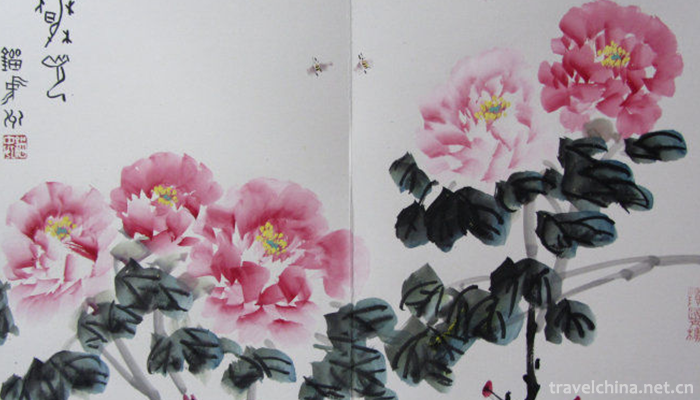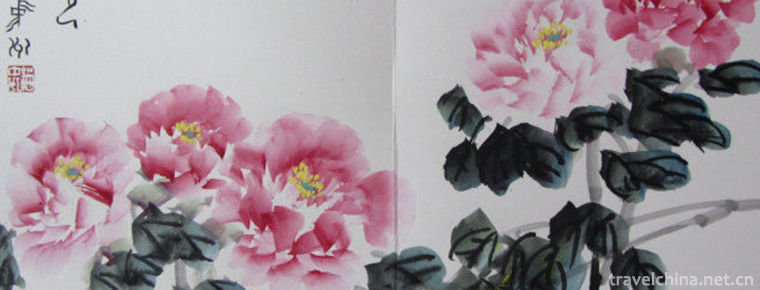Luoyang Peony Festival
Luoyang Peony Festival
The Chinese Luoyang Peony Culture Festival, formerly known as the Luoyang Peony Flower Festival, has been selected into the national intangible cultural heritage list since 1983. In November 2010, it was officially approved by the State Council and the Ministry of Culture to be upgraded to a national festival and renamed as the "Luoyang Peony Culture Festival of China", sponsored by the Ministry of Culture and the People's Government of Henan Province. Flowers blossom and fall on the twentieth day. Everyone in a city is crazy. China Luoyang Peony Culture Festival is a large-scale comprehensive economic and cultural activity which integrates flower and lantern viewing, tourism, economic and trade cooperation and exchange. It has become a platform for Luoyang to develop its economy and a window to display its city image, a bridge for Luoyang to go to the world and a business card for the world to understand Luoyang.
Basic introduction
The Chinese Luoyang Peony Culture Festival, formerly known as the Luoyang Peony Flower Festival, has been selected into the national intangible cultural heritage list. By 2012, the Luoyang Peony Culture Festival successfully held 30 sessions and upgraded the national cultural festival in 2010. Over the past 30 years, the Municipal Committee and the Municipal Government have adhered to the guiding ideology of "taking flowers as media, making friends widely, publicizing Luoyang and expanding its opening up", "setting up a platform in Luoyang and singing operas throughout the province", and have organized the Peony Flower Club into a large-scale comprehensive economic and cultural activity that integrates flower viewing, tourism, economic and trade cooperation and exchanges. Luoyang Peony Flower Festival has become a major event in the political, economic and cultural life of the city's people, an indispensable grand festival for the people of Luoyang, a platform for Luoyang's economic development and a window for displaying the image of the city, a bridge for Luoyang to enter the world and a business card for the world to understand Luoyang. At the same time, it has become an excellent platform and stage for enterprises to display their strength, establish their image and publicize their reputation.
development history
On September 21, 1982, the Standing Committee of the People's Congress of Luoyang City adopted a resolution to regard peony as the "city flower" of Luoyang City. The annual Luoyang Peony Flower Fair was held from April to May according to the situation of peony blooming. Since 1983 (2013), Luoyang has successfully held 31 peony fairs.
humanistic spirit
In Chinese traditional culture, peony is elegant, dignified and magnificent, which evokes many associations, derives the cultural symbolic meanings associated with it, and forms the basic connotation of peony culture. In the minds of the people, peony is the embodiment of beauty, the symbol of purity and love. The national dignity is prosperous, the family is rich, noble and safe, and people like happiness and auspiciousness. Peony has both these characteristics and implications.
(1) Symbols of national prosperity and prosperity
Peony blossoms in blooming season, blooming like brocade, brilliant. In the prosperous period of the Tang Dynasty, the whole country was overwhelmed by it. The peony flower season became the carnival of the capital Chang'an and Luoyang. Since the Tang and Song Dynasties, peony has become a symbol of auspicious happiness, prosperity and prosperity, and can be continued from generation to generation.
In 1959, Premier Zhou Enlai said in Luoyang: "Peony is the national flower of our country. It is graceful, magnificent and magnificent. It is the symbol of the prosperity, prosperity and happiness of our Chinese nation." Today, the cultural symbolic significance of peony has been given new meaning, because it represents the peaceful and peaceful future of China, which is reforming and opening up. It has bright characteristics of the times and expresses the common ideals and aspirations of the people of all nationalities.
(2) Expectation and Pursuit of Rich Life
Peony flower grandmother purple son-in-law red, magnificent, from the temperament to give people a sense of wealth. Since the Song Dynasty, peony has been called "rich flowers". This is from Zhou Dunyi, a philosopher of Song Dynasty, who wrote in The Talk of Ailian: "Since Li and Tang Dynasty, the world has loved peony very much", "Peony, the rich and noble of flowers". From then on, peony and the word "rich and noble" are closely linked. In the paintings of past dynasties and various arts and crafts, peony, as a symbol of wealth, shows different meanings combined with wealth in different combinations with other flowers, birds and rocks.
(3) High-minded and respectful spirit without fear of dignity and dignity
People love peony and endow it with the excellent character of representing the spiritual strength of the Chinese nation. Wu Zetian visited the garden in winter. It was so popular that he ordered 100 flowers to open within a certain time. They were deterred by power and had to open. The single peony did not blossom on time, but Wu Zetian ordered it to be set on fire and demoted to Chang'an. In The Story of Autumn Wong Meet the Immortals, a group of evil slaves destroyed the flower hegemony garden. Peony fairies came in time to save the destroyed peony flowers and severely punished the thugs. Peony is highly praised for its spirit of being fearless of powerful and evil forces. As a "rich and precious flower", peony is not delicate and fragile. She originally grew in the mountains of Mangmang. In modern times, because of the shrinking forest area, the Wild Peony can only grow stubbornly in the cliffs. On the arid and barren land of the Loess Plateau, she still blossoms brilliantly.
economic cooperation
In 2012, the 30th Luoyang Peony Culture Festival of China signed 117 projects of foreign economic and technological cooperation, with a total investment of 10.73 billion yuan. Five of the world's top 500 enterprises, Mitsui Real Estate Co., Ltd. of Japan and Sandvik Company of Sweden have invested in Luoyang for the first time.
Social evaluation
From July 11 to 12, 2010, Liu Yuzhu, Director of Cultural Industry Department of the Ministry of Culture, came to Luoyang to investigate the development of Luoyang Peony Flower Festival and cultural industry. Liu Yuzhu pointed out that through five to ten years'efforts, Luoyang Peony Festival should be promoted to one of the most internationally influential cultural festivals and brands in China, so as to become a platform for displaying the spiritual features of contemporary Chinese people, for cultural exchanges between China and the world, and for a grand cultural festival with sustained international influence.
Therefore, in the future, we should combine the profound historical and cultural resources of Luoyang with the rapid development of contemporary culture to make it a platform for displaying the spiritual features of contemporary Chinese people; each flower festival should be combined with national cultural activities to become a miniature of national cultural activities; and the flower festival should be closely integrated with cultural industry to develop more and better cultural activities. Promoting the development of cultural industry; combining with expanding China's influence in the world, especially in culture, to make Huahui a platform for cultural exchange between China and the world; promoting the aesthetic taste and cultural quality of the whole people through Huahui activities. In the future, the Ministry of Culture will give full support to the Luoyang Peony Flower Fair and strive for a higher level and a new level as soon as possible.
On December 29, 2010, the Henan Provincial Department of Culture and the Luoyang People's Government held an expert demonstration meeting on the 29th Luoyang Peony Culture Festival in Zhengzhou.
In 2011, Luoyang Peony Culture Festival was awarded the most influential festival in the world in the selection of "Excellent National Festival 2011" sponsored by the Chinese Anthropological Ethnology Research Association and the International Festival Association. The evaluation refers to the authoritative evaluation system of the International Festival Association, and takes the nationality, internationality and innovation of the festival as the important evaluation index to create and support excellent national festival brand activities.


-
1.Chengdu Maoye JW Marriott Hotel
Chengdu Maoye JW Marriott Hotel is located in Tianfu Square, the heartland of Chengdu. It is about 30 minutes'drive from Chengdu Shuangliu International Airport to the hotel, opening the extraordinary
Time 2018-12-16 -
2.Shanghai Baoshan International Folk Art Exhibition Hall
Shanghai Baoshan International Folk Art Exhibition Hall is the first exhibition, research and protection of intangible cultural heritage in Shanghai constructed by Shanghai University in cooperation w
Time 2018-12-19 -
3.China Maritime Museum
China Navigation Museum, fully known as "Shanghai China Navigation Museum", is the first national navigational Museum approved by the State Council. It is co-constructed by the Ministry of T
Time 2018-12-22 -
4.Mudan River Side Wall
The Mudanjiang Side Wall was built in the Tang Dynasty, presumably at the junction of Mudanjiang City in Heilongjiang Province and the northeast of Hailin County.
Time 2019-02-07 -
5.Xuanzhen Ancient Cave Ecotourism Area
Xuanzhen Gudong Ecotourism Area is located in the north of Qingxin County, about two kilometers away from Qingyuan City. The area of the whole scenic area is 7.8 square kilometers.
Time 2019-02-26 -
6.Traditional pasta making techniques
Traditional pasta making technology was listed in the second batch of national intangible cultural heritage list in 2008.
Time 2019-04-20 -
7.Production Techniques of Lhasa Jiami Water Mill
Jiami Water Mill was built in the 17th century A.D. It shows the outstanding ability of Tibetan people in mechanical manufacturing and grain processing. It makes full use of natural spring water to gr
Time 2019-05-10 -
8.Manufacturing Skills of Inside Lined 1000 Layer Cloth Shoes
Inline Shoe Shoe Shoe Shoe Shoe Shoe Shop was founded in 1853 in Xianfeng, Qing Dynasty. At first, it was specially designed for the royal family and officials at all levels t
Time 2019-06-07 -
9.Brown Fan Dance
On the day of the grand Brown fan dance festival, adult men gather in groups on a square with their own delicacies and rice wine every day, and hold a large-scale Brown fan dance activities by arrangi
Time 2019-08-16 -
10.Gufo weir
Located in Huanglongxi section of Jinjiang River in Chengdu, Gufo weir was built in the 25th year of Qianlong reign. Zhangfengzhu, the magistrate of Pengshan County, built a weir to irrigate Huayang, Renshou and Pengshan Sanyi fields.
Time 2020-11-05 -
11.Video of Chengdu Giant Panda Base
It has been said to take the children to Chengdu Giant panda base to play, but because the new coronavirus epidemic did not go
Time 2020-12-13 -
12.Meishan City honor
In November 2015, Meishan city was listed as the second batch of national new urbanization comprehensive pilot areas. In 2016, Meishan city was awarded the title of the first tourist destination in the Asia Pacific region (second and third tier cities).
Time 2020-12-18